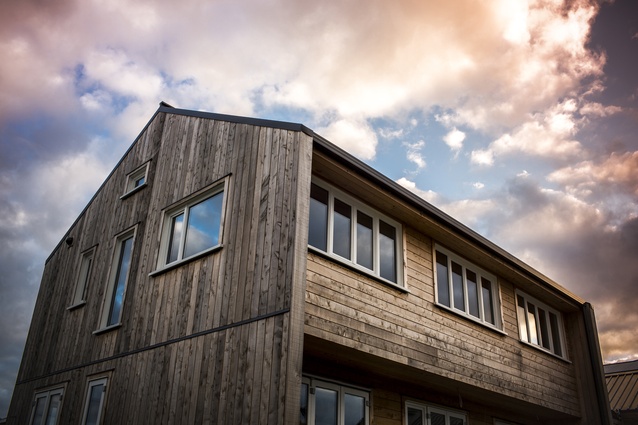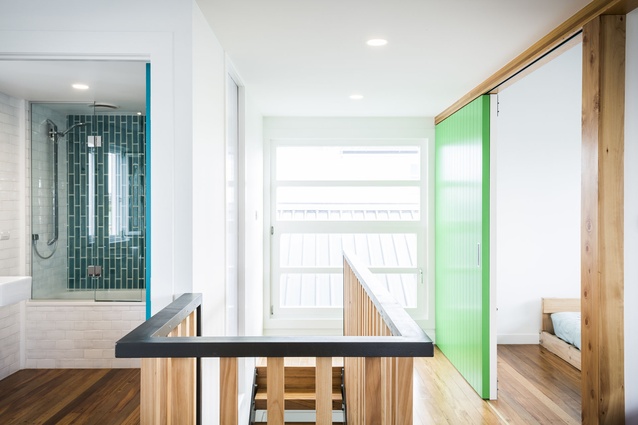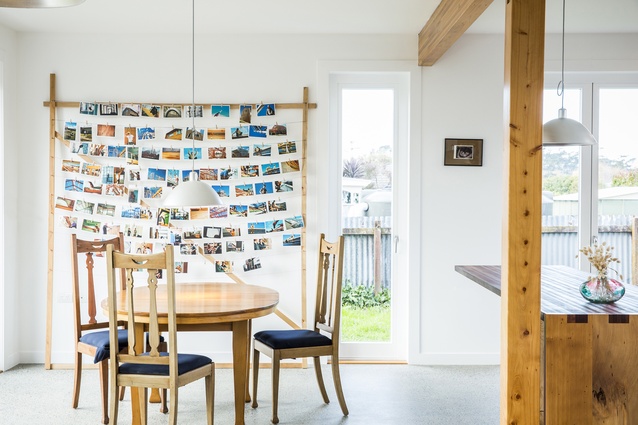Designing for personalised performance
The Zero Energy House, in Auckland’s Point Chevalier, was the first New Zealand project to receive Net Zero Energy certification from the International Living Future Institute (ILFI). Net Zero Energy means the house generates as much energy as it uses, and the ILFI certification is based on performance data recorded by the home’s monitoring and control system over one year.
Houses: What is it like living in a Zero Energy house?
Shay Brazier: Similar to other homeowners, our experience is defined by factors such as how comfortable it is and how much it costs to run. We’ve been in the house for two years now and are really happy with how comfortable it is. At the beginning of the project we set target temperatures for different parts of the house and used computer models to ensure we could achieve them without heating or cooling. It’s been satisfying to realise these targets, but the best part is the feeling of being comfortable year-round, at all times of the day, and in all areas of the house.
In the first year we generated twice as much energy as we used, because it was just the two of us in the house and the solar photovoltaic system has been sized to achieve Zero Energy when we have a family. In that first year we made a profit of $360 by selling surplus energy back to the grid and expect to make about the same this year.
Houses: How is Evident Connect related to the Zero Energy House?
SH: Early on in the project, my partner Jo and I decided to publish our progress and results with the aim of inspiring people to reach for higher levels of performance in their homes. A friend of ours, Matt Fordham, helped us document and communicate the research, design decisions, construction methods and performance. This was done primarily on the project website but also via public events, media articles and interviews.
This generated a lot of interest and over the course of the project hundreds of people contacted us with questions about their own homes. We soon found however that while the project had inspired them in the way we’d hoped, they were unsure how to achieve higher performance levels themselves.
Matt and I sat down a year ago and went through all the correspondence we had received to identify the common challenges people were facing. Over the past year we’ve developed a process that responds to those challenges by enabling clients and design teams to set explicit performance targets and then achieve them through design. It links in with a typical design process and has been tested on three projects with three architects during 2014. We’ve recently launched it to the general public as Evident Connect.
Houses: What is the biggest challenge people face in improving the performance of their homes?
SH: Knowing what to ask for. There are many performance standards and rating tools out there, and we’ve heard from a lot of people who are confused about which one suits them best. This makes it hard for people to start projects with the confidence that they are aiming in the right direction.
We believe the best way to overcome this is to set aside the standards and ratings and think about what we call ‘personalised performance’, which means setting targets for things like the temperatures clients want in different parts of the house at different times of the year, how much they want to pay for energy and water over the lifetime of the home, the materials they want to exclude during construction and what environmental impacts they want to minimise. Personalised performance recognises that everyone – and every house – is unique.
Houses: How is designing for personalised performance different than a typical design process?
SH: The overall process is not necessarily different but at each stage there are activities that ensure the design evolves in line with how the client wants their home to perform.
One of those activities involves testing the performance of the design. This can be done at any stage using building modelling software to show expected temperatures, daylight levels and energy and water use. It allows clients and design teams to assess design options not just on look and feel but also against performance targets. The design can then be refined and retested iteratively until the targets are met.
Another is selection of systems for the home. Setting clear targets upfront makes it possible to look at end-to-end solutions rather than individual systems. At the Zero Energy House, energy was considered holistically so increasing the efficiency of lighting and appliances meant the solar photovoltaic system could be smaller. Taking this end-to-end view helps achieve performance targets as cost-effectively
as possible.
Houses: Do architects or designers need specialist skills throughout the process?
SH: No, and I think we proved that with the Zero Energy House where we deliberately chose architects (and builders) who didn’t have prior experience in delivering high-performing homes in order to demonstrate to the wider industry it was achievable. That’s an area we’ve focused on while creating the process and tools for Evident Connect and testing it with architects – ensuring it sits alongside, integrates and adds value to a typical design process.
Houses: How can clients and their design teams be confident the house performs to expectations?
SH: People experience comfort or discomfort in their homes and pay their energy and water bills and these can be used as indicators of how the home is performing. However, that doesn’t help with diagnosis or management of performance. Monitoring and control systems, on the other hand, do. They can report real-time performance of the house, provide alerts of faults or leaks in water or energy systems and enable troubleshooting when something goes wrong. They can also be used to connect and control the various systems in the home, automating it to run as efficiently as possible.
Houses: When is the best time for people to incorporate personalised performance into their design?
The earlier the better. Ideally, people would set targets for things like temperatures and energy and water costs at the same time they’re setting the rest of their design objectives. This would allow the early design stages to evolve with performance in mind, achieving significant improvements in future temperatures and running costs before details and features are locked in and changes become harder to make.
Houses: Aside from specific performance outcomes, what do clients and design teams get from following a process like this?
SH: Many people have a desire to improve the performance of their homes but they’re unsure of what level to aim for, or how to get there. A process that starts with explicit measurable targets gives clients the confidence to communicate what it is they want in their homes. Supporting design teams to achieve those targets gives everyone on the project a greater feeling of control over the ultimate performance of the home.
Houses: The Zero Energy House attracted a lot of attention as an innovative project. Where do you see innovation in New Zealand housing going from here?
SH: We see the next phase of innovation being focused on delivering people the types of homes they are inspired by. Case study homes built over the past few years have shown what is possible; they now need to be made accessible to the broader market. Personalised performance, which allows people to express their own preferences and gives them and their design teams the tools to achieve them, can facilitate that transition.
Visit the Evident Connect website for more information.














